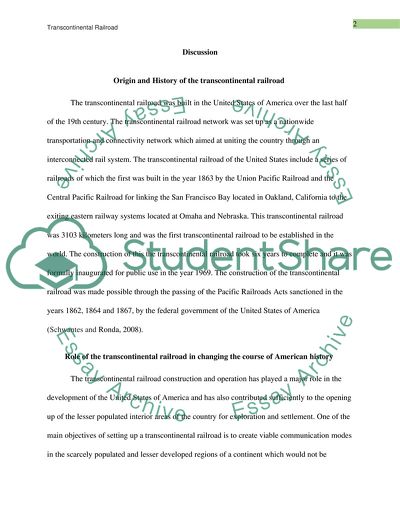Cite this document
(The Origin, History and Evolution of the Transcontinental Railroad Essay Example | Topics and Well Written Essays - 1500 words, n.d.)
The Origin, History and Evolution of the Transcontinental Railroad Essay Example | Topics and Well Written Essays - 1500 words. https://studentshare.org/history/1877785-transcontinental-railroad
The Origin, History and Evolution of the Transcontinental Railroad Essay Example | Topics and Well Written Essays - 1500 words. https://studentshare.org/history/1877785-transcontinental-railroad
(The Origin, History and Evolution of the Transcontinental Railroad Essay Example | Topics and Well Written Essays - 1500 Words)
The Origin, History and Evolution of the Transcontinental Railroad Essay Example | Topics and Well Written Essays - 1500 Words. https://studentshare.org/history/1877785-transcontinental-railroad.
The Origin, History and Evolution of the Transcontinental Railroad Essay Example | Topics and Well Written Essays - 1500 Words. https://studentshare.org/history/1877785-transcontinental-railroad.
“The Origin, History and Evolution of the Transcontinental Railroad Essay Example | Topics and Well Written Essays - 1500 Words”. https://studentshare.org/history/1877785-transcontinental-railroad.


